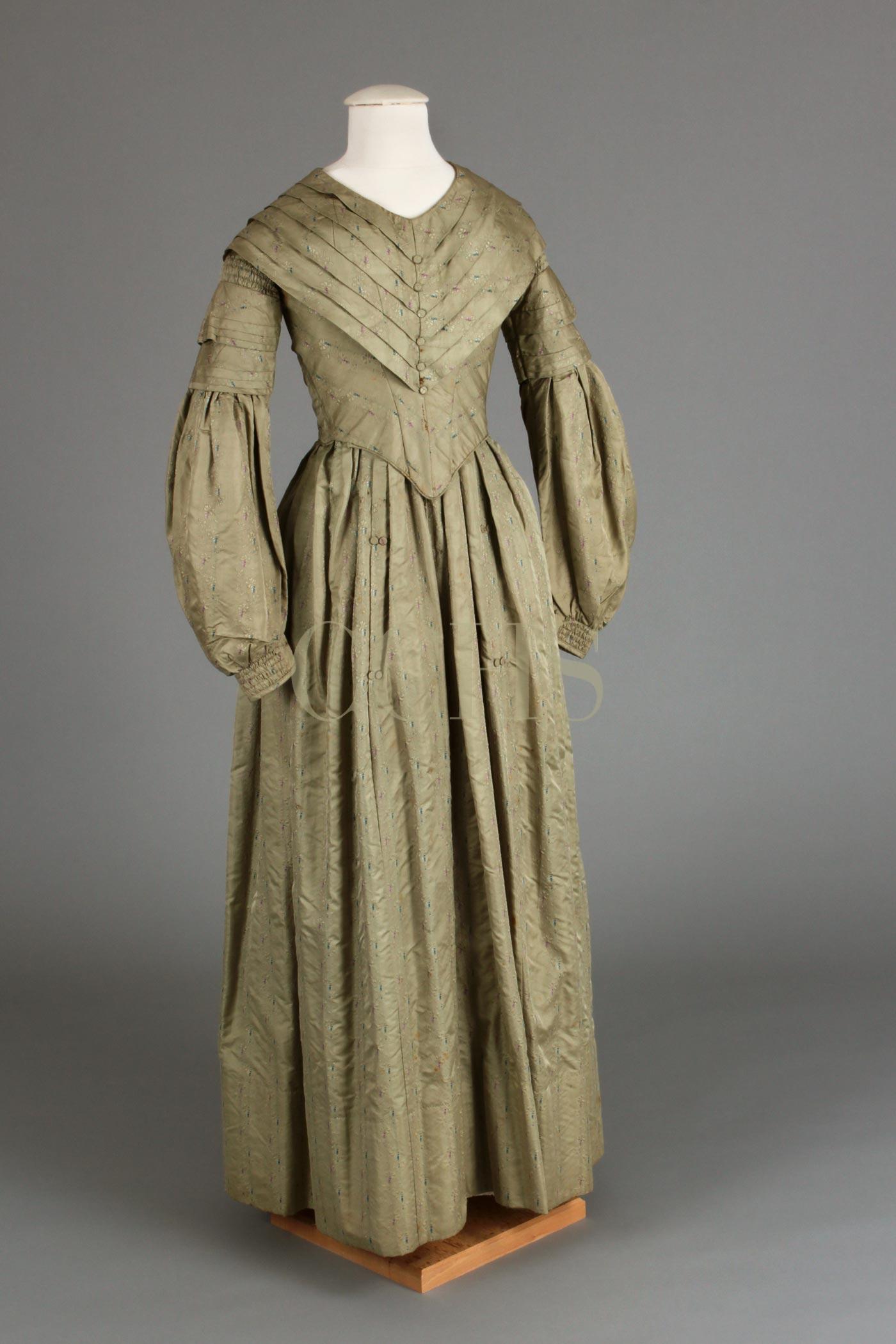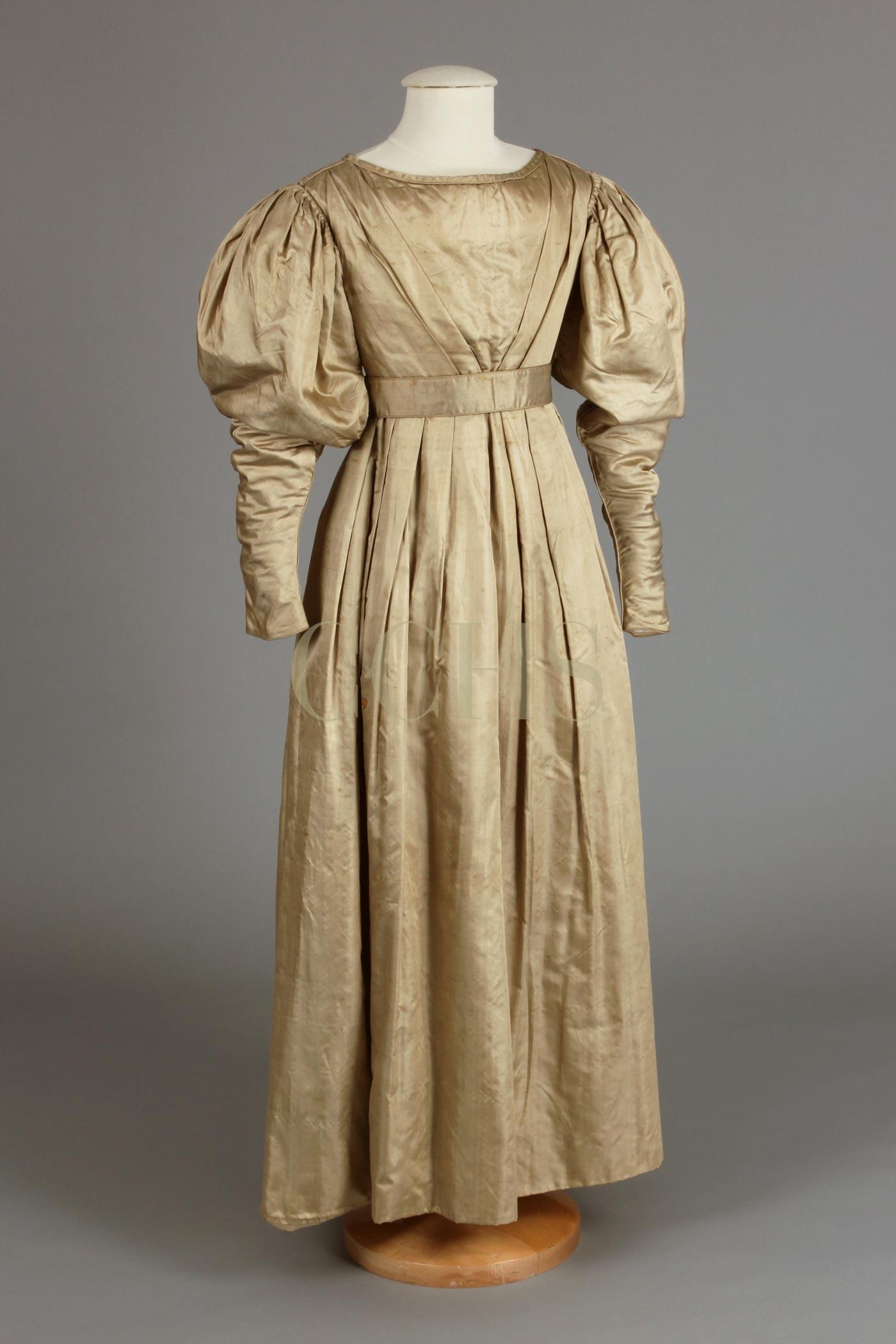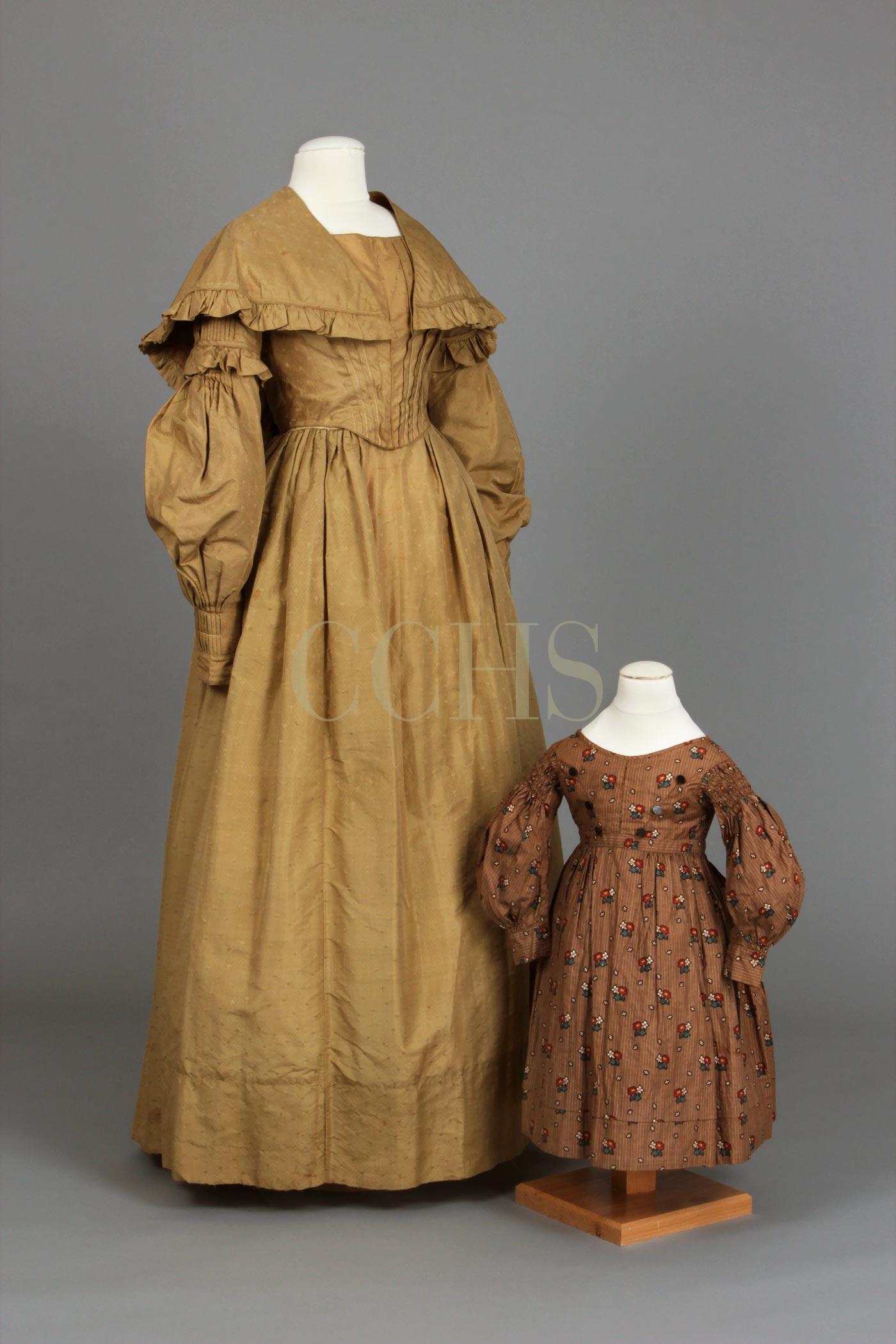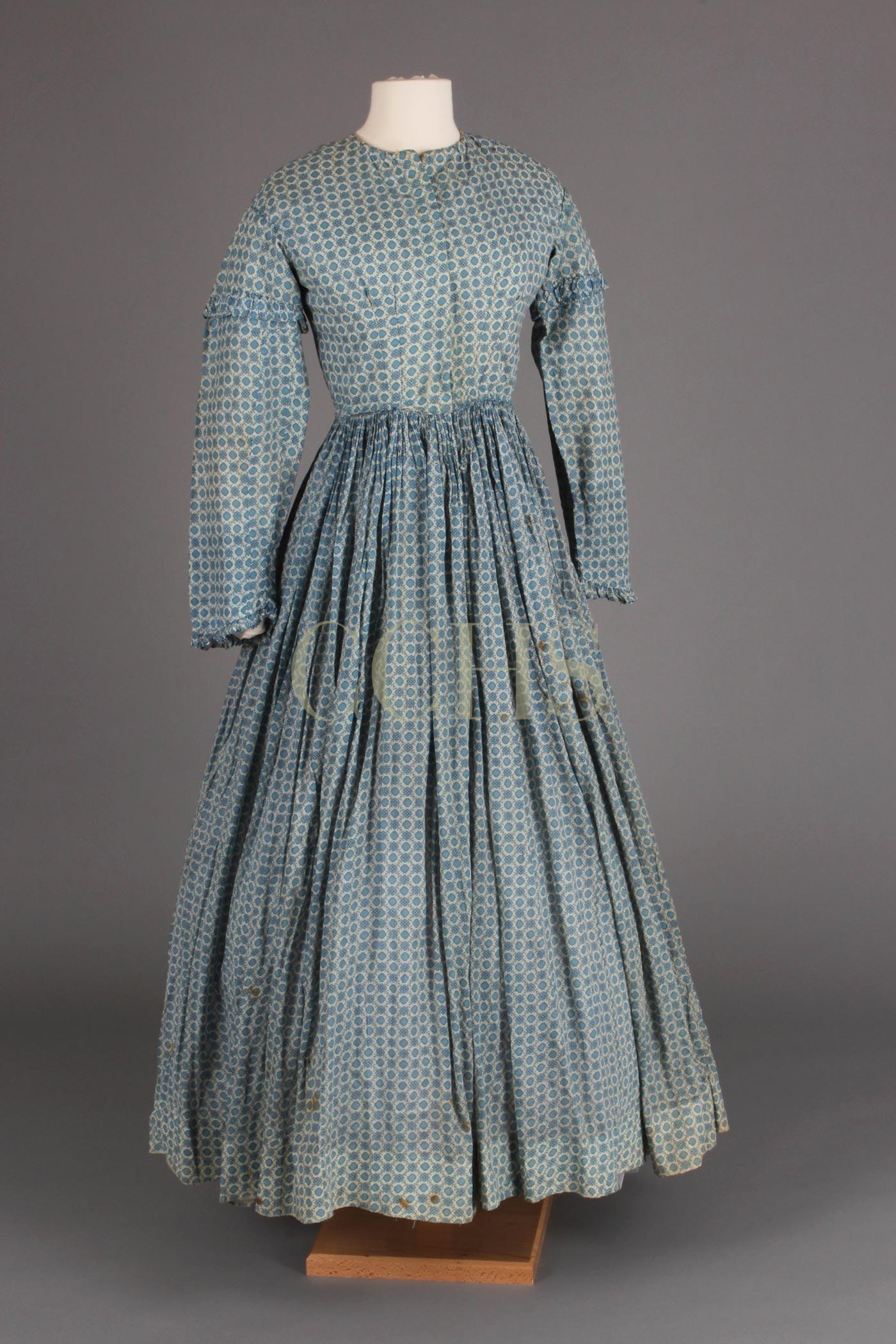



Godey’s Lady’s Book, first published in Philadelphia in 1830, became an important source for fashionable ideas from Europe, especially for women. Their clothing profiles shifted to billowing sleeves, pleated bodices, and lower, tighter waist bands known as the Romantic Style. For men, decorative and sometimes flashy waistcoats were a personal touch to uniformly simple jackets and breeches. On the other end of the spectrum was distinctive Quaker plain dress. By wearing it, local Quakers revealed their beliefs and their place in the community.
Whether decorative or plain, fabrics of all sorts were increasingly available from the U.S. and abroad and became more affordable. Most noteworthy, however, was the invention of the sewing machine. It was revolutionary. From the 1840s onward, it changed clothing construction forever.
Godey’s Lady’s Book was the first nationally distributed women’s magazine in America, published in Philadelphia starting in 1830. It was the most widely circulated magazine before the Civil War and likely had local subscribers. However, local residents also dressed according to their beliefs. The Society of Friends (Quakers) aimed for simplicity. Even in this rural setting, Quakers were becoming more distinctly different in appearance from their neighbors.
The most important change in women’s underwear came in the late 1850s. Crinoline hoops of whale bone, cane or steel replaced heavy petticoats that created bell-shaped skirts. Men’s long cotton shirts doubled as outer and underwear until they began wearing drawers underneath their trousers. While women’s undergarments were usually white, men’s shirts could be printed, patterned, and more colorful.
The first commercial sewing machines of the 1850s redefined “handmade.” Simple and complex clothing became much faster to make and intricate decoration easier to apply. Hand sewing began to disappear from school instruction. Printed cotton became more affordable than linen, due in part to mechanized weaving and printing. However, there was also a human toll. Enslaved people in the American South produced much of the raw material.
In the 1840s and 1850s women’s bodices became tighter and more restrictive and sleeves were form fitting. The bell-shaped sleeve cuffs of the 1850s echoed the wide skirts supported by crinoline hoops after 1856. Dress reformers advocated looser, more practical clothing for women. This gained little support at the time, even though the profile was ridiculed by the press. Except for decorative vests, men’s clothing had taken on a uniform quality of dark wool coats and trousers for both day and evening wear.
225 N. High Street, West Chester, PA 19380 | 610-692-4800
Sign up for our Newsletter
Automated page speed optimizations for fast site performance